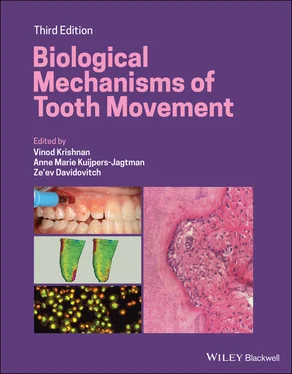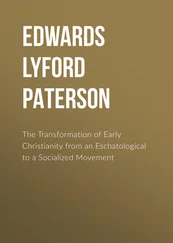19 Garant, P. R. and Cho, M. I. (1979) Autoradiographic evidence of the coordination of the genesis of Sharpey's fibers with new bone formation in the periodontium of the mouse. Journal of Periodontal Research 14(2), 107–114. doi:10.1111/j.1600‐0765.1979.tb00779.x.
20 Gordon, S. and Martinez‐Pomares, L. (2017) Physiological roles of macrophages. Pflugers Archiv 469(3–4), 365–374. doi:10.1007/s00424‐017‐1945‐7.
21 Gordon, S. and Plüddemann, A. (2017) Tissue macrophages: heterogeneity and functions. BMC Biology 15(1), 53. doi:10.1186/s12915‐017‐0392‐4.
22 Hadjidakis, D. J. and Androulakis, II. (2006) Bone remodeling. Annals of the New York Academy of Sciences 1092, 385–396. doi:10.1196/annals.1365.035.
23 Harizi, H., Corcuff, J.‐B. and Gualde, N. (2008) Arachidonic‐acid‐derived eicosanoids: roles in biology and immunopathology. Trends in Molecular Medicine 14(10), 461–469. doi:10.1016/j.molmed.2008.08.005.
24 Hasegawa, T. (2018) Ultrastructure and biological function of matrix vesicles in bone mineralization. Histochemistry and Cell Biology 149(4), 289–304. doi:10.1007/s00418‐018‐1646‐0.
25 Henneman, S., Von den Hoff, J. W., and Maltha, J. C. (2008). Mechanobiology of tooth movement. European Journal of Orthodontics 30, 299–306. doi.org/10.1093/ejo/cjn020
26 Henneman, S., Reijers, R. R., Maltha, J. C. and Von den Hoff, J. W. (2012) Local variations in turnover of periodontal collagen fibers in rats. Journal of Periodontal Research 47(3), 383–388. doi:10.1111/j.1600‐0765.2011.01444.x.
27 Hill, P. A., Tumber, A. and Meikle, M. C. (1997) Multiple extracellular signals promote osteoblast survival and apoptosis. Endocrinology 138(9), 3849–3858. doi:10.1210/endo.138.9.5370.
28 Hixon, E. H., Aasen, T. O., Clark, R. A. et al. (1970) On force and tooth movement. American Journal of Orthodontics 57(5), 476–478. doi:10.1016/0002‐9416(70)90166‐1.
29 Hixon, E. H., Atikian, H., Callow, G. E. et al. (1969) Optimal force, differential force and anchorage. American Journal of Orthodontics 55(5), 437–457. doi:10.1016/0002‐9416(69)90083‐9.
30 Hock, J. M., Krishnan, V., Onyia, J. E. et al. (2001) Osteoblast apoptosis and bone turnover. Journal of Bone and Mineral Research 16(6), 975–984. doi:10.1359/jbmr.2001.16.6.975.
31 Hubmacher, D., Tiedemann, K., and Reinhardt, D. P. (2006) Fibrillins: from biogenesis of microfibrils to signaling functions. Current Topics in Developmental Biology 75, 93–123.
32 Jiang, C., Li, Z., Quan, H. et al. (2015) Osteoimmunology in orthodontic tooth movement. Oral Diseases 21(6), 694–704. doi:10.1111/odi.12273.
33 Jiang, N., Guo, W., Chen, M. et al. (2016) Periodontal ligament and alveolar bone in health and adaptation: tooth movement. Frontiers of Oral Biology 18, 1–8. doi:10.1159/000351894.
34 Jilka, R. L., Weinstein, R. S., Bellido, T. et al. (1998) Osteoblast programmed cell death (apoptosis): modulation by growth factors and cytokines. Journal of Bone and Mineral Research 13(5), 793–802. doi:10.1359/jbmr.1998.13.5.793.
35 Jonsdottir, S. H., Giesen, E. B. and Maltha, J. C. (2012) The biomechanical behaviour of the hyalinized periodontal ligament in dogs during experimental orthodontic tooth movement. European Journal of Orthodontics 34(5), 542–546. doi:10.1093/ejo/cjq186.
36 Jónsdóttir, S. H., Giesen, E. B. and Maltha, J. C. (2006) Biomechanical behaviour of the periodontal ligament of the beagle dog during the first 5 hours of orthodontic force application. European Journal of Orthodontics 28(6), 547–552. doi:10.1093/ejo/cjl050.
37 Kechagia, J. Z., Ivaska, J. and Roca‐Cusachs, P. (2019) Integrins as biomechanical sensors of the microenvironment. Nature Reviews Molecular Cell Biology 20(8), 457–473. doi:10.1038/s41580‐019‐0134‐2.
38 Kerrigan, J. J., Mansell, J. P. and Sandy, J. R. (2000) Matrix turnover. Journal of Orthodontics 27, 227–233.
39 Kielty, C.M. (2006) Elastic fibres in health and disease. Expert Reviews in Molecular Medicine 8(19), 1‐23. doi: 10.1017/S146239940600007X.
40 Klein‐Nulend, J., Bakker, A. D., Bacabac, R. G. et al. (2013) Mechanosensation and transduction in osteocytes. Bone 54(2), 182–190. doi:10.1016/j.bone.2012.10.013.
41 Krishnan, V. and Davidovitch, Z. (2006) Cellular, molecular and tissue‐level reactions to orthodontic force. American Journal of Orthodontics and Dentofacial Orthopedics 129(4), 469.e461–432. doi:10.1016/j.ajodo.2005.10.007.
42 Lee, D., Sims, M. R., Dreyer, C. W., & Sampson, W. J. (1991) A scanning electron microscope study of microcorrosion casts of the microvasculature of the marmoset palate, gingiva and periodontal ligament. Archives of Oral Biology 36, 211–220.
43 Lekic, P. and McCulloch, C. A. (1996) Periodontal ligament cell population: the central role of fibroblasts in creating a unique tissue. Anatomical Record 245(2), 327–341. doi:10.1002/(sici)1097‐0185(199606)245:2<327::Aid‐ar15>3.0.Co;2‐r.
44 Lerner, U. H. (2012) Osteoblasts, osteoclasts and osteocytes: Unveiling their intimate‐associated responses to appplied orthodontic forces. Seminars in Orthodontics 18, 237–248.
45 Lerner, U. H., Kindstedt, E. and Lundberg, P. (2019) The critical interplay between bone resorbing and bone forming cells. Journal of Clinical Periodontology 46(Suppl 21.), 33–51. doi:10.1111/jcpe.13051.
46 Li, Y., Jacox, L. A., Little, S. H. and Ko, C. C. (2018) Orthodontic tooth movement: The biology and clinical implications. Kaohsiung Journal of Medical Science 34(4), 207–214. doi:10.1016/j.kjms.2018.01.007.
47 Listik, E., Azevedo Marques Gaschler, J., Matias, M., et al. (2019) Proteoglycans and dental biology: the first review. Carbohydrate Polymers 225, 115199.
48 Littlewood, S. J., Kandasamy, S. and Huang, G. (2017) Retention and relapse in clinical practice. Australian Dental Journal 62(Suppl. 1), 51–57. doi:10.1111/adj.12475.
49 Maeda, T., Kannari, K., Sato, O. and Iwanaga, T. (1990) Nerve terminals in human periodontal ligament as demonstrated by immunohistochemistry for neurofilament protein (NFP) and S‐100 protein. Archives of Histology and Cytology 53, 259–265.
50 Maeda, T., Ochi, K., Nakakura‐Ohshima, K. et al. (1999) The Ruffini ending as the primary mechanoreceptor in the periodontal ligament: its morphology, cytochemical features, regeneration, and development. Critical Reviews in Oral Biology and Medicine 10, 307–327.
51 Maltha, J. C. and Von den Hoff, J. W. (2017) Biological basis for orthdontic relapse, in Stabiity, Retention and Relapse in Orthodontics (eds C. Katsaros and T. Eliades). Quinessence, Berlin. Pp. 15–28.
52 Marson, A., Rock, M. J., Cain, S. A. et al. (2005) Homotypic fibrillin‐1 interactions in microfibril assembly. The Journal of Biological Chemistry 280, 5013–5021.
53 Martino, F., Perestrelo, A. R., Vinarský, V. et al. (2018) Cellular mechanotransduction: from tension to function. Frontiers in Physiology 9, 824. doi:10.3389/fphys.2018.00824.
54 McGeachie, J. and Tennant, M. (1997) Growth factors and their implications for clinicians: a brief review. Australian Dental Journal 42(6), 375–380. doi:10.1111/j.1834‐7819.1997.tb06081.x.
55 Meikle, M. C. (2006) The tissue, cellular and molecular regulation of orthodontic tooth movement: 100 years after Carl Sandstedt. European Journal of Orthodontics 28(3), 221–240. doi:10.1093/ejo/cjl001.
56 Militi, A., Cutroneo, G., Favaloro, A. et al. (2019) An immunofluorescence study on VEGF and extracellular matrix proteins in human periodontal ligament during tooth movement. Heliyon 5(10), e02572. doi:10.1016/j.heliyon.2019.e02572.
57 Mundy, G. R. (1993) Cytokines and growth factors in the regulation of bone remodeling. Journal of Bone and Mineral Research 8(Suppl. 2), S505–510. doi:10.1002/jbmr.5650081315.
Читать дальше












